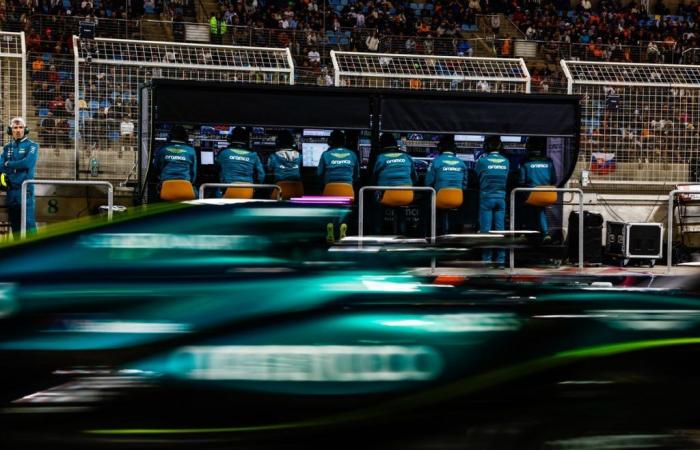
A joke has been circulating in the Formula 1 paddock since the start of the season: Great Britain has never had such well-kept gardens! This is a reference to what is called across the Channel “gardening leave”, an informal name given to what in France is called a “prenotice”, that is to say the period which follows the end of an employee’s contract with one team, before they are contractually free to join another.
After all, if someone has signed with a competitor, it is not in their future ex-team’s interest to let them leave immediately, as they could take valuable knowledge with them. To avoid this, staff members are often forced to complete their contracts, either by working on special projects unrelated to F1 or by staying at home.
During this period, their knowledge of current developments is limited, so that when they arrive at their new team, they do not have much to contribute.
Over the years, manufacturers have considerably lengthened this period imposed in the event of resignation, sometimes reaching more than 12 months. For example, Frédéric Vasseur, director of Ferrari, recruited his new chassis technical director, Loïc Serra, at the end of spring 2023, but the latter did not officially join the team until October 1, 2024.
The gardening leave system was accepted because it protects those who fear losing staff. However, it has been the subject of a certain amount of criticism for some time, with some wondering whether there was a need to modify this philosophy.
Since the end of 2022, eight of the ten F1 teams have recruited a new team director, and it is usual for a new arrival at the head of a structure to want to change the organization chart. All this results in recruitment campaigns which, in the vast majority of cases, aim to attract technicians and managers from other teams.
From the time you need someone to the time you see results from their work, it takes two to three years.
This is what we have been witnessing since the start of 2023, with a series of personnel movements (especially technical) which gave rise to hundreds of resignation letters. As one team member said on condition of anonymity: “If we bring together everyone who is on gardening leave, we can form an 11th stable!”
Last winter, Vasseur spoke of the difficulties encountered by leaders who want to leave their mark on a structure. “When you realize you have a gap to fill through a hire, you know a new employee will have to wait 12 months before joining the team.”
“After this period he can start coming to the office, but his contribution will only be visible in the following year’s project. So between the time you need a person and the time you see the results related to his work, two to three years pass.”
Frédéric Vasseur, director of Scuderia Ferrari.
Photo de: Sam Bloxham / Motorsport Images
This situation has become a headache for most teams. And when inconveniences become common, the will to fix them grows. It is therefore not surprising that, in recent weeks, sources within the paddock have raised the idea of a “gentleman’s agreement” aimed at uniformly reducing the length of gardening leave. It is understood that several key elements are at the heart of the debate.
For example, does such a long period of gardening leave still make sense today, given the evolution of working methods? During the period of COVID lockdowns, for example, there was a very strong movement to improve solutions enabling remote working, and Formula 1 (that’s its nature) is characterized by its speed and efficiency when It’s about adapting to new technology.
Remote working has solved many problems, but also created new ones. Indeed, who today is able to check if a professional, during his notice period, is not making a contribution to his future team from home? A few years ago, the presence of a technician on site was essential to guarantee their involvement in a service. Today, being in contact with employees remains a “plus”, but it is no longer essential.
Hence the strange conflict between the need to impose long periods of “gardening” and the impossibility of supervising them, which risks putting in difficulty those who insist on respecting the contractual clauses compared to those who have less of qualms about turning on a computer and working from home.
Paradoxically, this also weighs on the budgetary cap of their former team, since the agreement provides for remuneration until the expiration of the fixed notice period.
Beyond that, there are those who see gardening leave as an obstacle to the overall evolution of the world of Formula 1. The movement of personnel without too many constraints has always been the main means of exchanging information, which also helps level the playing field in F1 to a certain extent.
Today, this process appears to be slowed down by the tight schedule in which Formula 1 teams operate. Is it really wise to continue to prevent staff from joining the competition when a manufacturer feels frustrated at not being able to recruit people as quickly as it wants? The teams seem to be losing on both counts.
While the F1 jobs market may be busier than it has been in years, it’s a topic that isn’t going away – and it’s looking increasingly likely that this issue will disappear very soon from the agenda of the team directors’ meetings.





